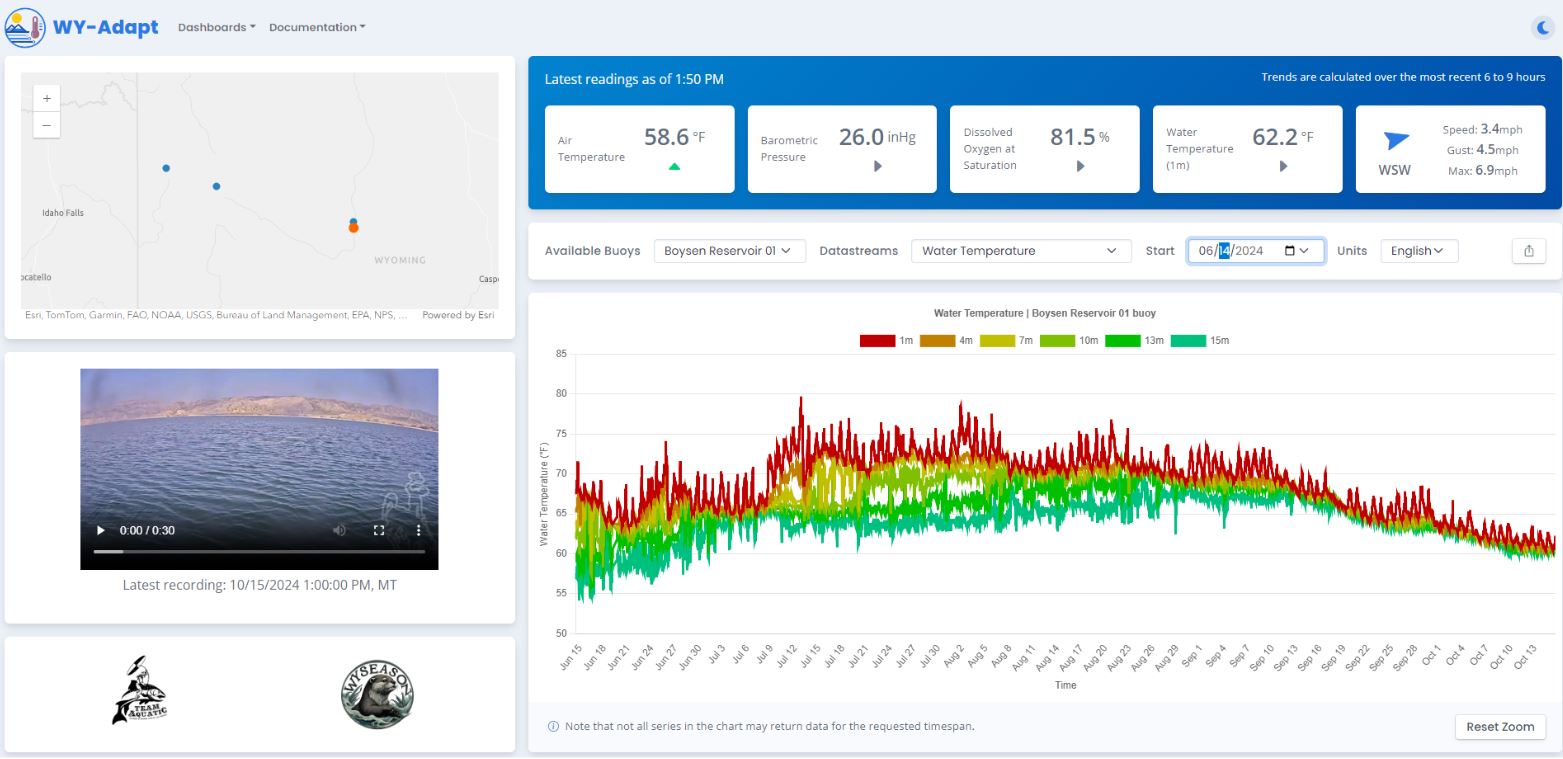Data Check-ins: We include a data-inspired check-in to start each of our TRKE virtual sessions. We aim for these check-ins to be useful for our cohort's shared learning, but also hope our framing and the resources we share might be useful to other folks. We encourage you to look through this data-inspired check-in, explore the resources we use, engage with our prompts, and consider whether you'd be able to adapt this progression for your own context. Check out an example, below, to see if it might be for you, and explore our other posts with the “data check-in” tag to see other examples we’ve used.
Facilitator Context: We designed this check-in to use an application dashboard from WY-Adapt created by the Wyoming Anticipating the Climate-Water Transition (WyACT) team at the University of Wyoming. WY-Adapt is an interactive, web-based data science platform designed to help communities across the Western United States explore and understand local climate projections. It transforms complex global climate model outputs into intuitive maps, charts, and datasets tailored to the region’s diverse environmental conditions.
During our October 17th, 2024 Virtual Session we demonstrated a Data Check-in using the WY-Adapt Lake Buoy Dashboard. We used the following framing to engage teachers in the resource.
Framing & Flow: After opening the Lake Buoy Dashboard, our participants chose to look at either "Jackson Lake 01" OR "Boysen Reservoir 01" and selected a date range that showed the full summer season (June through present).
Participants were told to "take a few minutes to explore individually" and were given the following questions to help guide their exploration:
-
- "What are you noticing in the graph?"
- "What might it be telling you? Look at the variables and how they are changing over time."
During the individual exploration, we asked, "What functions are you noticing if you drag your cursor over your graph or if you click and highlight a certain portion of the graph?"
Following the individual exploration, participants were asked to share their observations with the group.
Next, in small groups, participants conducted a mini-investigation comparing water temperature profiles from Summer 2023 to this year's data. They were then asked to:
-
- Make a claim: "How are the temperature profiles similar to or different from last year?"
- Pose more questions: "What questions do you now have about the lake system?"
When participants returned from their small group investigations, they were asked to share their questions and consider, "How might you investigate your questions?"
A Data Check-in Skeleton: These are the general steps we include in all of our data check-ins.
- Identify a shared context and/or puzzling idea.
- Analyze/interpret a related dataset to explore trends, gather evidence, and test initial ideas.
- Reflect on what can be uncovered in these data and what new questions arise.
- Come together to share takeaways and connections to learners' own interests and contexts.
Reflect on How You Might Connect to these Ideas:
- How could you incorporate similar data exploration activities in your own context?
- What tools or ideas could help learners engage with real-world data?
- How might current research or researchers and interactive datasets enrich your teaching strategies?
